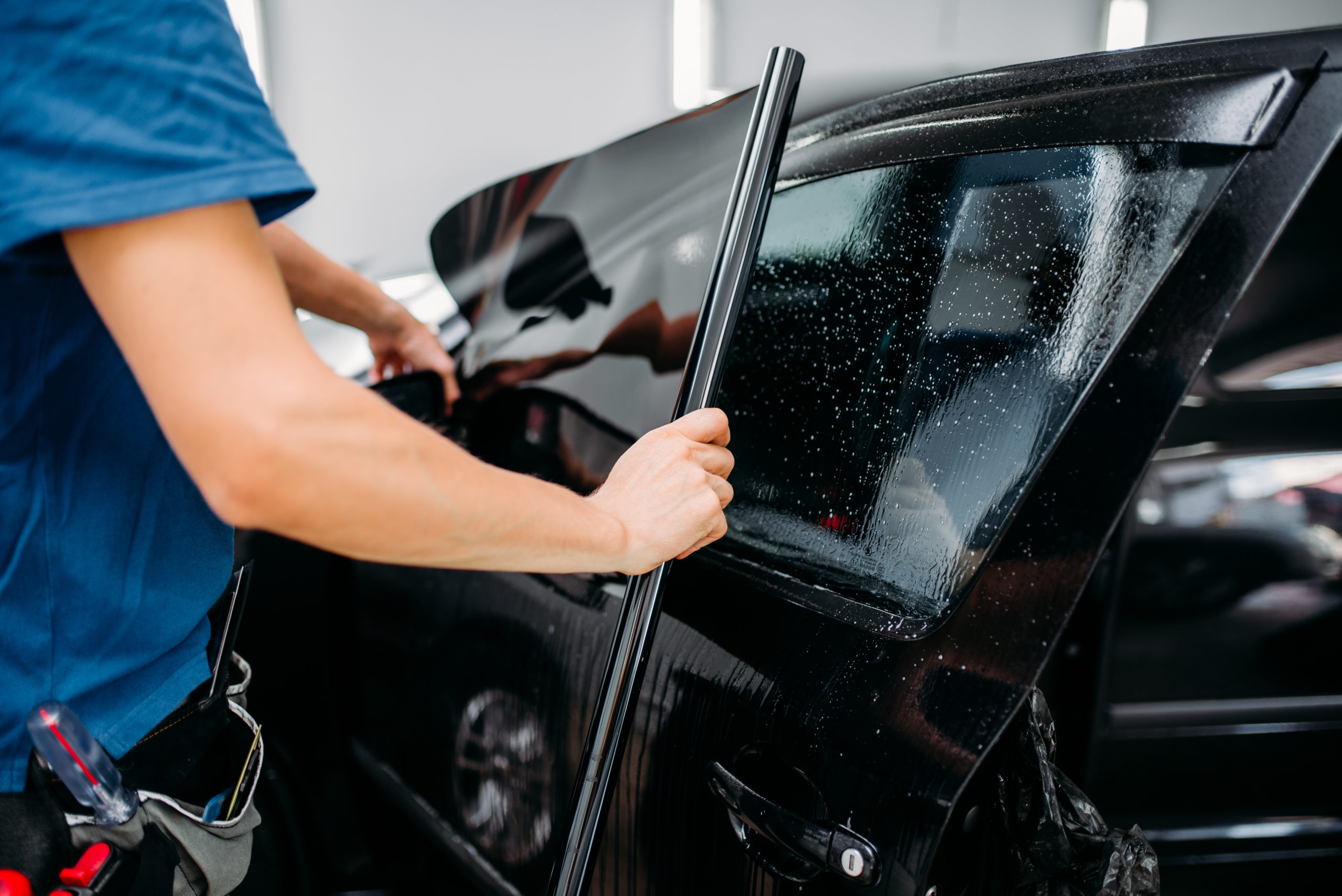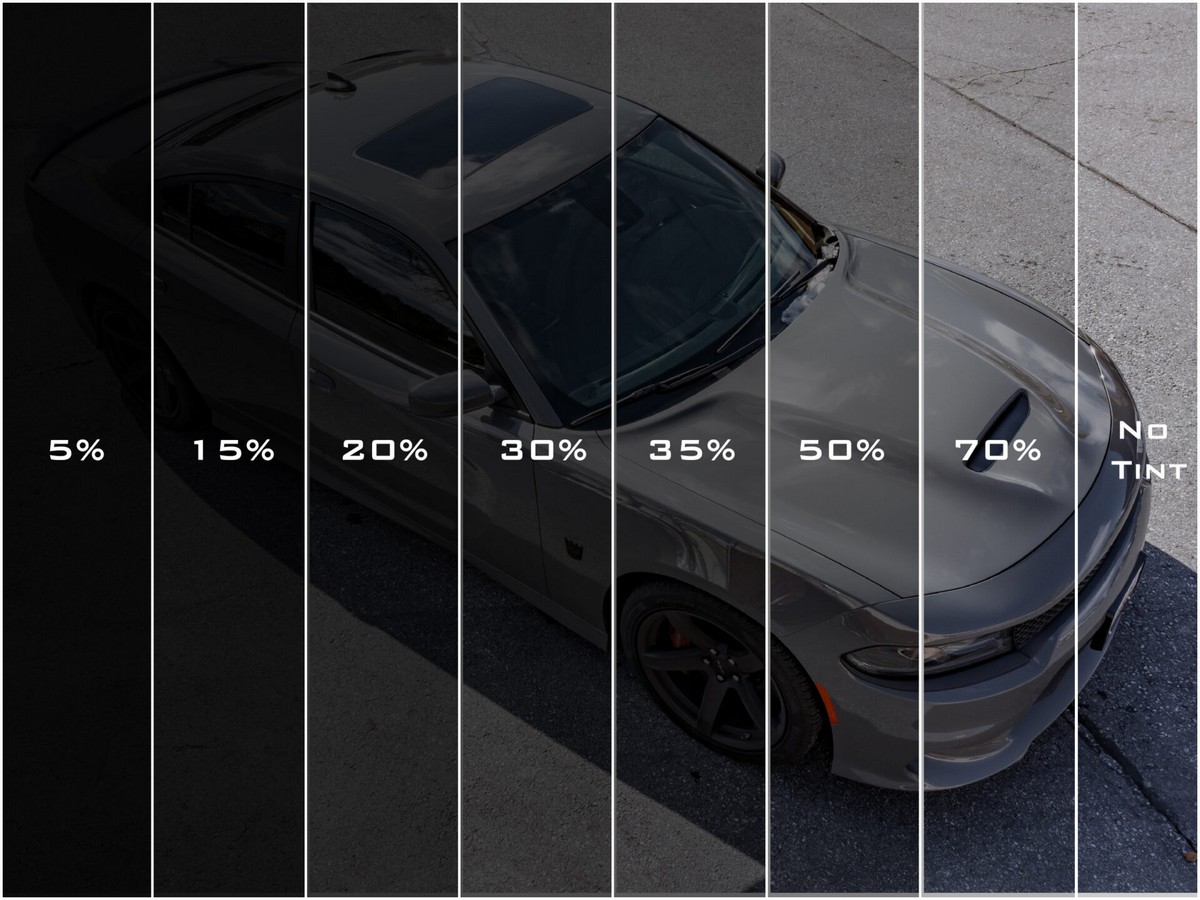How Window Tinting Can Keep Your Car Cabin Cooler During the Summer
Wiki Article
Window Tinting Options: Find the Right Shade for Your Design and Demands
Picking the appropriate window tint for your car involves a cautious factor to consider of different elements, consisting of personal appearances, useful needs, and legal restrictions. With alternatives varying from light tintss that provide marginal personal privacy to darker tones that enhance privacy, the choices can be frustrating. window tinting. Comprehending the effects of noticeable light transmission (VLT) percentages and the advantages of different materials is crucial in making an educated choice. As you contemplate your alternatives, you may question how these elements interaction to produce not just an appearance, yet a tailored experience on the road.Comprehending Window Tinting Levels
When considering window tinting, it is important to understand the numerous levels of tint available, as they considerably affect both aesthetics and capability. Window tinting is classified based on Visible Light Transmission (VLT) percents, which suggest the amount of light allowed to pass through the glass. The VLT percentage can range from really light (over 70%) to extremely dark (below 5%)The key degrees of tint consist of clear, which offers UV security without modifying presence; light tint (over 50% VLT), which slightly reduces glow while keeping presence; medium tint (around 35% VLT), striking a balance in between personal privacy and light transmission; and dark tint (listed below 20% VLT), providing considerable personal privacy and warm reduction but limiting outside presence.
Understanding these levels is essential as they can influence driving safety and security, legal compliance, and individual convenience. In addition, neighborhood laws often determine allowable tint degrees, varying by state or district. Consequently, prior to choosing a tint, it is advisable to study and ensure adherence to these guidelines while thinking about individual preferences for style and practical benefits.
Popular Tint Shades Explained

One of the most prominent alternatives is the timeless dark tint, usually varying from 20% to 5% VLT (Noticeable Light Transmission) This shade uses optimum personal privacy and a smooth, innovative appearance. It properly obstructs UV rays and warmth, making it perfect for sunny climates, though it might limit exposure at evening.
On the other hand, lighter tones such as 35% or 50% VLT offer a much more refined look while still offering some level of privacy. These tones are excellent for those looking for an equilibrium in between looks and functionality, as they enable far better exposure and comply with numerous lawful standards.
Another emerging preference is the ceramic tint, which can can be found in a selection of shades - window tinting. It offers superior warmth being rejected and UV security without substantially modifying the vehicle's appearance

Legal Regulations for Window Tinting
Comprehending the lawful regulations bordering window tinting is essential for vehicle owners seeking to tailor their vehicles. Each state in the U.S. has details regulations controling the darkness or lightness of window tintss, usually measured by Visible Light Transmission (VLT) portion. VLT describes the amount of light that can go through the glass and the film combined.In numerous states, policies dictate various VLT percents for various windowss, including front windscreens, side windowss, and rear windowss. For circumstances, some states may allow a tint of 70% VLT for windscreens while permitting darker tintss for rear windowss. Additionally, certain states have restrictions on reflective tintss, which can develop glare for other drivers.
Failing to adhere to these regulations can cause penalties, mandated elimination of Continue the tint, and enhanced insurance costs. Car proprietors need to seek advice from local legislations or state DMV web sites to ensure they are within lawful limits before continuing with installment. Comprehending these laws not only helps avoid lawful consequences but also guarantees a risk-free driving experience.
Benefits of Various Tint Products
Exploring the advantages of numerous tint materials exposes significant advantages that can improve both the capability and visual appeal of an automobile. Each product supplies distinct features matched to details demands and preferences.Dyeded window films are prominent for their price and capability to lower glare. They effectively block UV rays, safeguarding the inside from fading, though they might not give the highest possible heat being rejected. Metalized films, on the other hand, deal remarkable warm reduction and UV defense as a result of their reflective properties. They can boost privacy and security however may disrupt electronic signals.
Ceramic window films stand for a costs option, giving phenomenal heat denial while maintaining presence. They are non-metallic, hence avoiding any signal disruption, and are highly long lasting, standing up to scratches and fading in time. Additionally, ceramic films do not have dyes, guaranteeing a longer-lasting look.
Finally, hybrid films incorporate aspects from dyeded and metalized alternatives, offering a well balanced efficiency in regards to warm rejection, glow decrease, and price. Each tint material offers distinct objectives, enabling lorry owners to pick the very visit here best suitable for their way of life and visual choices, eventually boosting their driving experience.
Choosing the Right Tint for You
Discovering the right window tint entails considering different aspects, consisting of individual choices, vehicle type, and regional guidelines. Evaluate your personal style and preferred level of privacy, as these will direct your option of tint shade. Darker tintss provide enhanced privacy but may not appropriate for all motorists, specifically those that favor an even more open feeling inside their automobile.Following, consider your automobile type, as the shapes and size of windowss can influence the performance of particular tintss. For example, bigger windowss may take advantage of reflective tintss that lower glow while smaller windowss may be more matched to dyeded films that provide subtle appearances.
In addition, it's important to check neighborhood guidelines concerning window tinting. Numerous states enforce limitations on the allowable darkness and reflectivity, especially for front windowss. Conformity with these laws is important to prevent fines and make certain safety and security.
Finally, review the tint product that best fits your needs. Choices consist of dyeded, metalized, ceramic, and crossbreed films, each offering special advantages associating to warmth rejection, UV defense, and sturdiness. By taking into consideration these elements, you can with confidence choose a window tint that aligns with your style and useful requirements.
Final Thought
In verdict, selecting the proper window tint needs cautious factor to consider of various elements, consisting of VLT percents, local guidelines, and the wanted visual. Different tint materials use one-of-a-kind benefits that can enhance automobile convenience and defense. By thoroughly understanding the offered alternatives and straightening them with functional demands and specific preferences, one can achieve an ideal equilibrium in between design and capability in window tinting choices.Choosing the suitable window tint for your car includes a moved here cautious factor to consider of different aspects, consisting of individual aesthetics, functional needs, and lawful constraints. Each state in the United state has certain regulations controling the darkness or agility of window tintss, typically determined by Visible Light Transmission (VLT) portion. Some states may allow a tint of 70% VLT for windscreens while allowing darker tintss for rear windowss.Finding the right window tint entails taking into consideration different aspects, consisting of personal choices, automobile kind, and local laws.In final thought, choosing the ideal window tint calls for cautious consideration of numerous variables, including VLT percentages, neighborhood laws, and the preferred aesthetic.
Report this wiki page